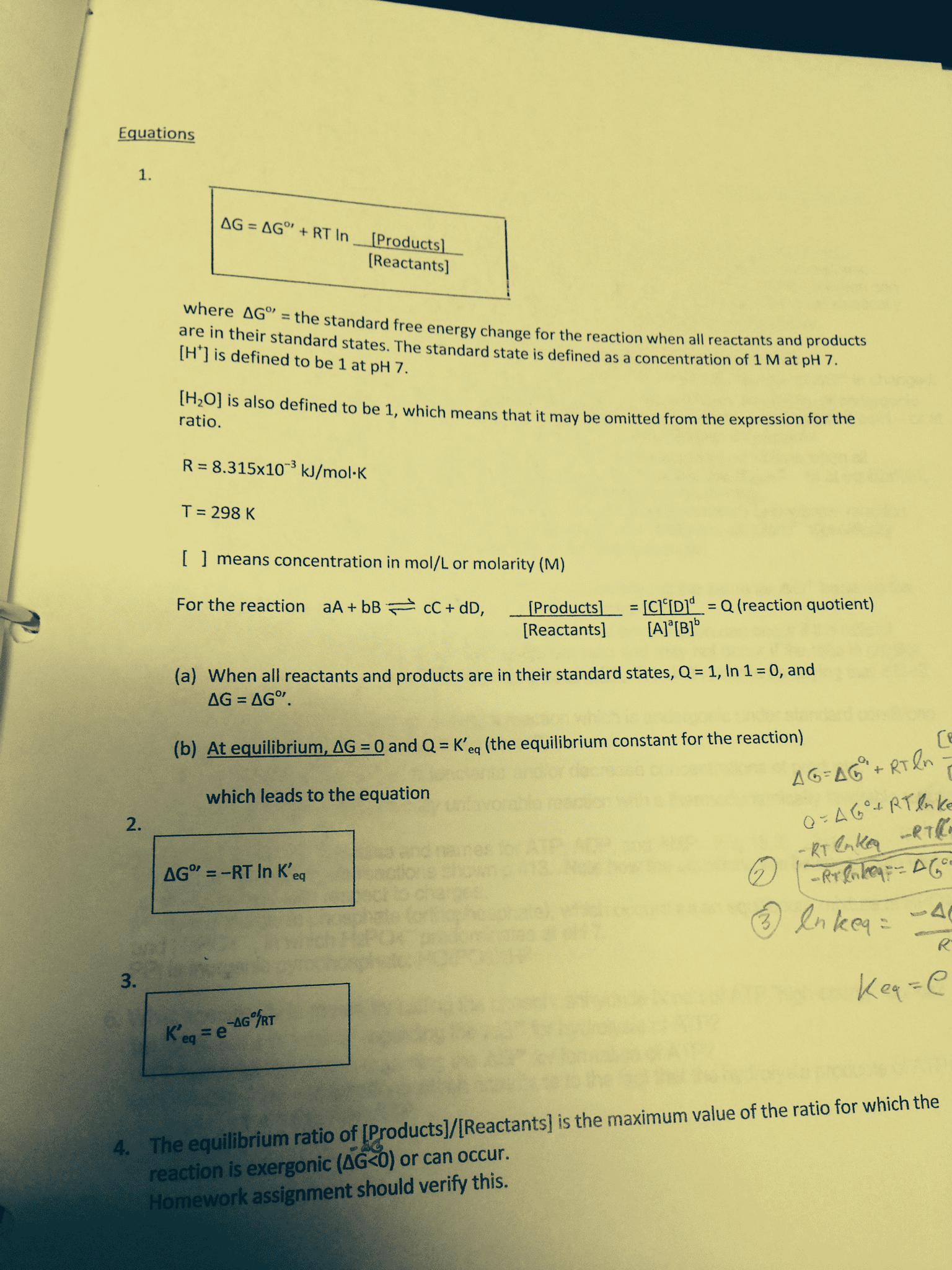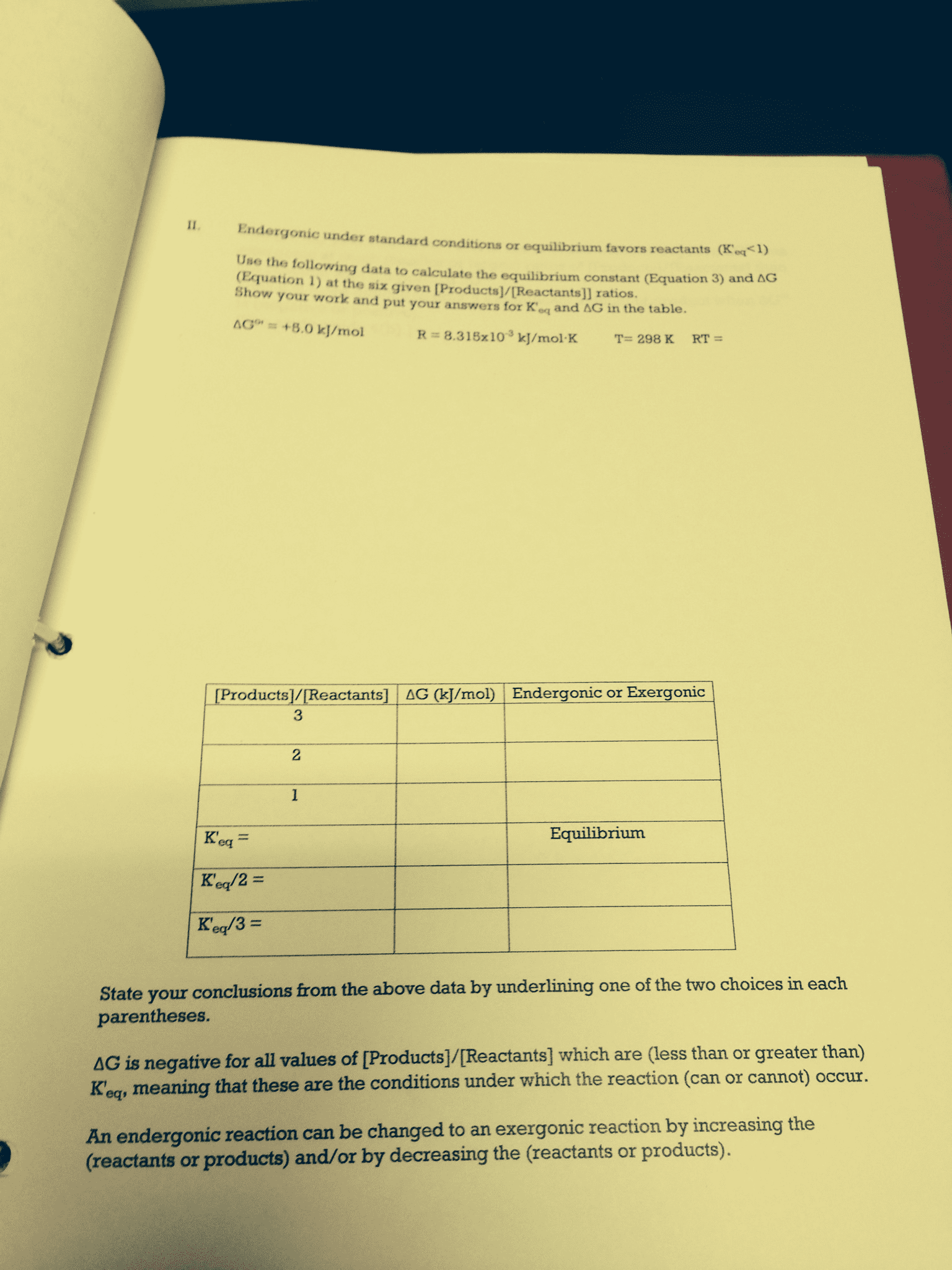MBB 222 Lecture Notes - Lecture 6: Equilibrium Constant
25 views2 pages
20 Dec 2018
School
Department
Course
Professor
Document Summary
In other words, g is the sum of two parts: g" , which depends upon the intrinsic properties of the reacting molecules under standard biochemical conditions, plus a function which depends upon their concentrations. G is a measure of the distance of a system from its equilibrium position (i. e. , where the concentrations of the reactants and products would be the equilibrium concentrations). The larger the value of g the further from equilibrium the reaction is. As the reaction approaches equilibrium, g approaches zero and [products]/[reactants] approaches k"eq. A chemical mixture at equilibrium has minimal free energy, so g = 0. G" and k"eq (the equilibrium constant are related) [a][b] and g" = -rt ln k"eq (because at equilibrium, g = 0) If g" is negative, k"eq will be greater than 1 (more products than reactants) and the forward reaction is favoured at standard state.
Get access
Grade+
$40 USD/m
Billed monthly

Homework Help
Study Guides
Textbook Solutions
Class Notes
Textbook Notes
Booster Class
10 Verified Answers
Class+
$30 USD/m
Billed monthly

Homework Help
Study Guides
Textbook Solutions
Class Notes
Textbook Notes
Booster Class
7 Verified Answers


